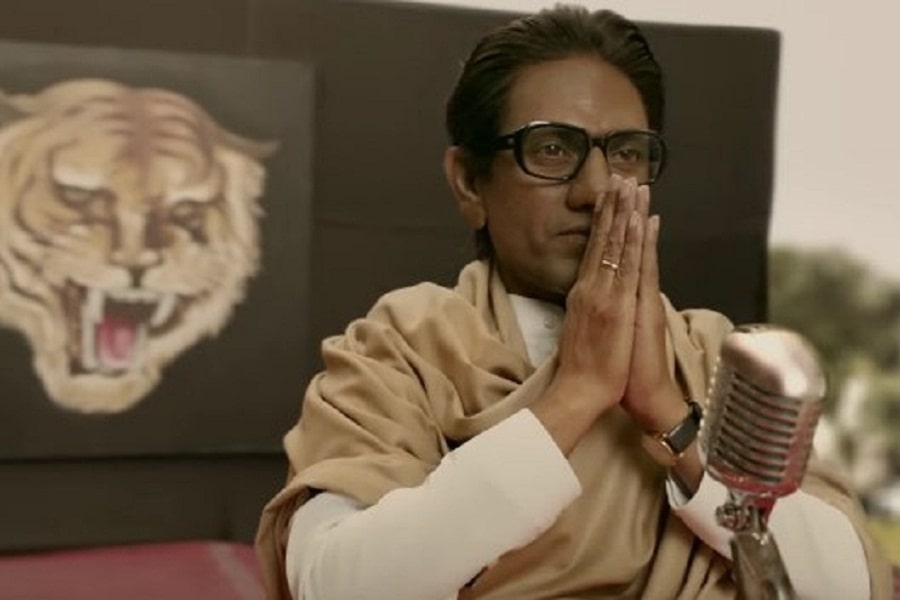Film: “Thackeray”; Director: Abhijit Panse; Cast: Nawazuddin Siddiqui, Amrita Rao, Sudhir Mishra, Abdul Quadir Amin, Radha Sagar, Laxman Singh Rajput; Rating: ***1/2
Director Abhijit Panse’s rendition of this biopic, crafted from Sanjay Raut’s story, spans from 1961 to 1994. It gives us an insight into the life of the late Bal Keshav “Balasahed” Thackeray, the founder of the Shiv Sena and his meteoric rise in Maharashtra’s political space.
Designed as a non-fiction and narrated in a non-linear manner, the film portrays Balasaheb as a caring and considerate family man and upturns many myths while portraying him as the fiery, revolutionary leader, who “has the power to control Bombay” in the times of questionable democracy.
Most of the lines spoken are direct lifts from Balashaheb’s speeches and writings, clearly displaying his presence of mind and how good an orator he was.
The plot is replete with the milestones that occurred during his lifetime, and each event is backed by facts in a cause and effect style, thus making the tale convincing. Despite some blood curdling scenes, you tend to empathise with the titular character and the film does ignite a spirit of linguistic loyalty.
The writing and direction are both shrewd and intelligent. The scenes and their transitions are subtly layered. Cases in point are: When an hoarding of the magazine Marmik (Saamana’s predecessor, meaning straight from the heart) is shifted, a man taking refuge behind it states: “Chaine se sone nahin dete.” In another instance, when a politician is ranting in Parliament about the rise of the Shiv Sainiks, the director dissolves into a shot of dogs barking on a beach – posing the question as to who listens to barking dogs?
The film is Nawazuddin Siddiqui’s canvas and with a near resemblance to the supremo during his younger days, he holds centre screen easily. Though he embodies Balashaheb, he does not manage to not transcend his source material or Balashaheb’s blazing spirit. He is more understated and demure in his disposition.
Amrita Rao is effortlessly convincing as Balasaheb’s wife Meenatai. Prakash Belawadi makes his presence felt in a one-scene role as the fiery trade union leader George Fernandes. The rest of the supporting cast has a strong similarity to the characters they portray.
Aesthetically presented, the film, with its black & white and sepia tinted frames, flawlessly captures the era.
While each moment in the film is simple and realistic and the fluidity of the narrative taut, the end is rather abrupt. But, the promise of a sequel is what keeps the spirits high while leaving the auditorium.
Overall, this film is notches better than any of the previous movies offering a glimpse into Balasaheb’s life.
IANS
